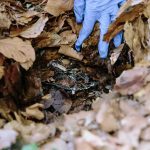Alaska native corporation’s mining deal in national park sparks environmental battle over fish and wildlife protection

A controversial mining agreement between an Alaska Native corporation and Contango Ore Inc. has ignited a fierce debate over environmental protection versus mineral extraction rights within one of Alaska’s most pristine wilderness areas. The dispute centers on a unique private land parcel located high in a mountain valley on the western shore of Cook Inlet, complete with a gravel airstrip and small cluster of buildings that serve as a remote outpost.
The Alaska Native corporation has leased mineral rights within national park boundaries to Contango Ore, a decision that has drawn sharp criticism from local fishing communities and environmental advocates. These groups argue that mining operations could threaten the delicate ecosystem that supports both wildlife and the region’s vital fishing industry, which depends on clean waterways and undisturbed habitat.
This conflict highlights the complex intersection of indigenous land rights, environmental conservation, and resource extraction in Alaska. While Alaska Native corporations have legal authority to manage their land holdings, including mineral rights, critics worry that mining activities could have far-reaching consequences for the surrounding national park ecosystem and the communities that rely on its natural resources.
The controversy represents a broader challenge facing Alaska and other resource-rich regions: balancing economic opportunities with environmental stewardship. As Contango Ore moves forward with its development plans, the outcome of this dispute could set important precedents for future conflicts between mineral extraction and conservation efforts in America’s protected wilderness areas.
This article was written by the EnviroLink Editors as a summary of an article from: Inside Climate News







